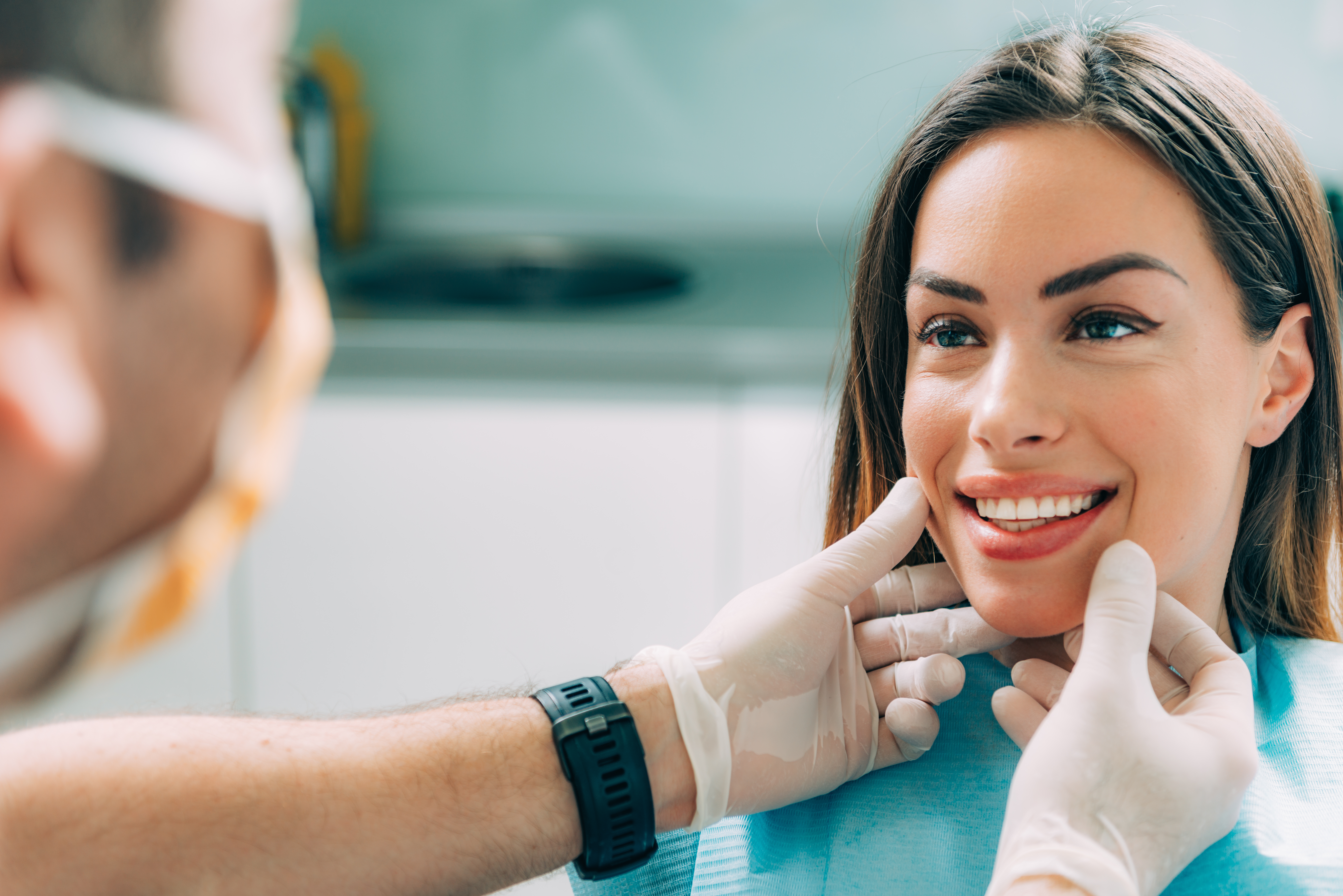Date
Whether you’re interested in a whiter smile or you need to fix chipped or overlapping teeth, you have many options available thanks to cosmetic dentistry. Learn more about cosmetic dentistry procedures today.
What is the difference between bonding and veneers? How do you know which treatment is right for you? Here are some factors to consider when making your decision.
Bonding
Dental bonding is a procedure that uses pliable, tooth-colored resin to correct a tooth’s appearance. The soft resin material is applied to the affected tooth, sculpted into shape and “bonded” to the tooth with a high-intensity light. Like veneers, bonding conceals damage to create the appearance of a healthy tooth.
Benefits of bonding include:
- Minimally invasive: Bonding doesn’t require any change to the tooth itself.
- Works for everyone: Adults and children with chipped or damaged teeth are candidates for bonding.
- Quick: The procedure typically takes place in a single visit and doesn’t require extra maintenance.
- Affordable: Bonding treatment is less expensive than many other cosmetic dental procedures.
- No down time: Following bonding treatment, patients can return to work or school.
However, because of the resin material, dental bonding may not last as long as veneers. However, it is an ideal option for patients who have minor aesthetic issues that don’t require extensive treatment.
Bonding is a great cosmetic option for:
- Fixing cracked, chipped, or damaged teeth
- Changing the shape of teeth
- Closing small gaps or spaces between teeth
- Improving the appearance of discolored teeth
- Relieving pain from tooth roots exposed due to gum recession
- Filling a cavity without using silver amalgam fillings
Veneers
Dental veneers are wafer-thin shell coverings made of porcelain. The shells are cemented to a patient’s tooth with a strong dental adhesive to cover the front surface of a tooth. Unlike dental bonding, a dentist must first shape and sculpt the patient’s existing enamel to make room for the hard porcelain veneer. An impression of your teeth will be taken and sent to a dental lab for fabrication. Patients wear a temporary set while the final veneers are being created. When the final veneers are ready, you’ll return to your dentist to have them fitted to your teeth.
Benefits of veneers include:
- Natural appearance: Porcelain is white and translucent, which gives veneers a realistic appearance that cannot be achieved with bonding.
- Stain-resistant: Porcelain does not stain. Veneers create a white, uniform smile almost immediately.
- Long-lasting: With proper care, veneers can last up to 20 years.
Veneers are an ideal option for patients who require more significant changes to their smile due to:
- Severe stains and discoloration
- Cracked or chipped teeth
- Large gaps between your teeth
- Crooked teeth (mild to moderate)
- Teeth that overlap
- Worn down teeth
Bonding and Veneers at McLean DDS
If you’re ready to repair damaged teeth and enhance your smile, bonding or veneers might be a good option for you. The best way to determine which cosmetic procedure will best suit your smile is to schedule a consultation with your dentist. At McLean DDS, we can make the best recommendation based on your budget, treatment timeline, and smile goals.
Schedule an appointment with McLean DDS today by calling (703)-734-2750.


 703-734-2750
703-734-2750






